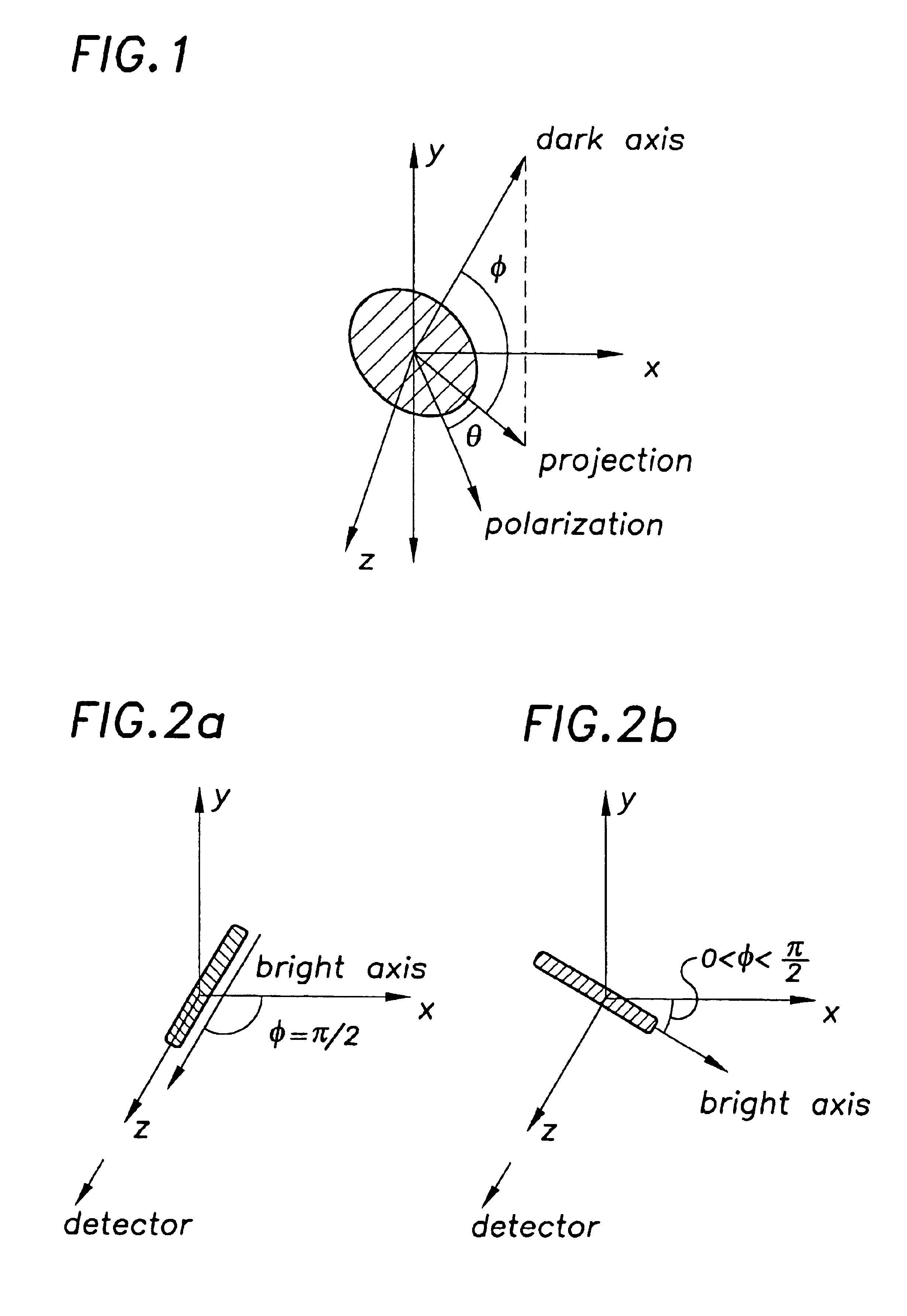Method for measuring 3-dimensional orientation of a photoactive moiety
a technology of photoactive moiety and 3-dimensional orientation, which is applied in the direction of fluorescence/phosphorescence, liquid/fluent solid measurement, instruments, etc., can solve the problems of inability to provide information about three-dimensional orientation relationships among objects, limited number of objects which can be tracked simultaneously, and several limitations of the techniqu
- Summary
- Abstract
- Description
- Claims
- Application Information
AI Technical Summary
Benefits of technology
Problems solved by technology
Method used
Image
Examples
example 1
[0027]In general, fluorescent detection can be used to locate and identify objects. The objects are labeled with identifiers composed of one or more markers which fluoresce at different wavelengths or, perhaps, at different intensities. Depending on the number of different wavelengths and intensities and how the different markers are mixed, a given number of different items can be detected. For example, for a given identifier, one may choose from blue, red, green or orange markers, which in turn may exhibit low or high fluorescent intensity. With this invention, one can add an extra variable, the polarization of the fluorescent emission, thereby increasing the number of different objects which can be detected. The markers would then exhibit a bright or dark axis or isotropic emission. For bright or dark axis molecules, the orientation of the axis can also be used as a label. The markers are irradiated, and the resulting emission correlated with the location of the particle. An appro...
example 2
[0029]This invention can be used according to conventional techniques to identify or track the motion of an object. By repeatedly exciting the markers, the motion of a large number of objects can be detected. The operator can then correlate the emission from the marker with the position of the object being tracked. If the markers are phosphorescent, the motion of the objects can be tracked continuously for short periods of time. Orientation information can be gathered directly if the markers are dark axis emitters. If a magnetic moiety is added to the marker, then the magnetic label can be used to set up an initial orientation with respect to an external magnetic field before the object is set in motion. However, the unique properties of the anisotropic emission dipole enables one to track much more than simple motion from point A to point B. As an object moves, it may change its orientation with respect to a fixed reference axis. As this orientation changes, the marker, which is fi...
example 3
[0031]This invention can also be used to track the motion of a gas, liquid, or other fluid. In this case, of course, the identifying marker is not attached to the medium. Instead, markers or even free photoactive molecules are simply released within the fluid. Indeed, it is not even necessary to fix the molecules within a matrix so long as they exhibit a bright axis in their natural state. If the medium is irradiated with polarized light, only molecules having the same orientation as the polarization axis of the absorbed radiation will emit light. If the molecules or markers exhibit a bright axis, then the stimulating radiation should be polarized along only two dimensions. Naturally, markers which have been photobleached to produce either a dark or bright axis can also be used to track the motion of the fluid. The radiation absorbed by the markers or molecules creates a transient emission dipole in the collection of markers. That is, because only some of the emission dipoles are st...
PUM
| Property | Measurement | Unit |
|---|---|---|
| wavelength | aaaaa | aaaaa |
| wavelength | aaaaa | aaaaa |
| emission wavelengths | aaaaa | aaaaa |
Abstract
Description
Claims
Application Information
 Login to View More
Login to View More - R&D
- Intellectual Property
- Life Sciences
- Materials
- Tech Scout
- Unparalleled Data Quality
- Higher Quality Content
- 60% Fewer Hallucinations
Browse by: Latest US Patents, China's latest patents, Technical Efficacy Thesaurus, Application Domain, Technology Topic, Popular Technical Reports.
© 2025 PatSnap. All rights reserved.Legal|Privacy policy|Modern Slavery Act Transparency Statement|Sitemap|About US| Contact US: help@patsnap.com



